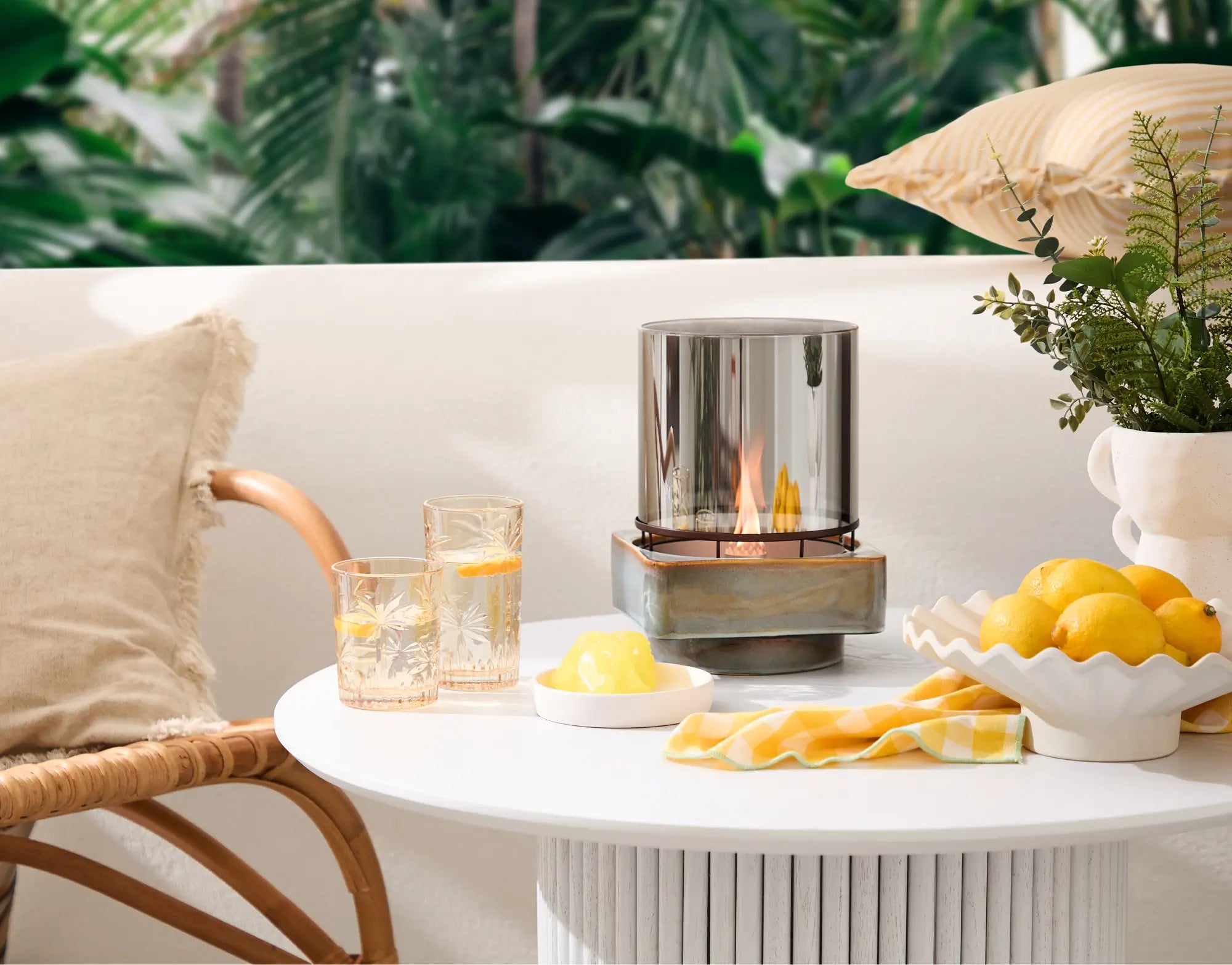We’ve covered how to clean up wax from carpet, clothes and glass, but what about how to remove candle wax from wood? Unlike other materials, wood can be a delicate and tricky to clean surface if you don’t take the right steps to treat it.
Fortunately, we’ve listed our top three ways to remove wax from wood. Whether you’ve dropped wax on your hardwood floors, on an unsealed table or a varnished bookshelf, we’ve got a method to help you solve your spillage.

Scrape the wax
Looking for a quick and easy method that requires little work? Many wooden bookshelves and tables are treated and sealed with varnish or polish, meaning that they can stand a bit more friction and wax isn’t as likely to soak into the wood. In this situation, scraping the wax off is the fast fix that you’re looking for. This method doesn’t require any solvents or heat, making it a safer option around children and pets. It’s also ideal for smaller wax spills or droplets.
- You need the wax to solidify for this method, so allow the wax to cool and harden. To speed this process up, pop a few ice cubes into a sandwich bag and lay it over the hardening wax. The cooler the wax gets, the more brittle it becomes, which makes it easier to release from the wood.
- Use a plastic spoon, credit card or plastic ruler to gently scrape off the wax. Move around the edges in short strokes to pry the wax up off the wood. The wax should all lift off in one chunk, but residual wax may be left behind.
- Use your tool of choice to very carefully scrape off the left over wax. If your wood surface is porous and wax has seeped into the grain, try the heating the wax method to remove any final traces.
- Finish off by running a clean microfiber cloth over the area to pick up any last bits of wax.
Use white spirits
Some methods require tools to remove the wax, but this can sometimes result in damaging your surface - and we don’t have a quick fix for that! For wood types that are sensitive to more physical attempts at removing wax, try using a solvent like white spirits to remove the stain. If you can’t get a hold of white spirits, distilled vinegar is another household item that will get the job done.
However, be wary that this option might not be suitable for unsealed wooden furniture as the liquid may seep down into the wood and damage it. This method is also best for smaller wax spillages to limit your exposure to solvents.
- Wait for the wax to cool and harden. In this case, solid wax will be easier to remove and trying to mop up liquid wax can smear it around further on your surface.
- Use a damp cloth to clean the surface area of the wax and surrounding wood. This ensures that there’s no dirt or residue that might hinder the removal process.
- Pour a generous amount of white spirits over the spilt wax to break the wax barrier. Always take precautions and be careful when using white spirits. Ensure your room is well ventilated and that you’re wearing long-sleeved clothing and protective gloves.
If you’re using distilled vinegar as an alternative, mix it with equal amounts of water to create a diluted mixture. Apply this as directed above to break down the wax build up. If the wax doesn’t appear to be dissolving, try mixing 250ml of distilled vinegar with 1 tablespoon of cream of tartar to make a slightly abrasive paste.
- Using a clean cloth, start to work the solvent into the wax. Always follow the grain of the wood with each stroke. A microfiber cloth works best here as it clings onto the wax, rather than just moving it around.
If using the vinegar and cream of tartar paste, apply generously before going in with a damp microfiber cloth.
- If the wax doesn’t begin to dissolve away, apply more pressure as you wipe the wood.
- Keep applying more solvent and rubbing until the wax is completely removed.
- Finish off by wiping the area down with a clean, dry cloth.
Heat the wax
If you’ve had a spillage on a wood type that’s porous and the wax has seeped into the grain, heating the wax to draw it up to the surface is the best method for you. This method is effective on most wooden surfaces and pieces of furniture as it has a low risk of damaging your wood. It’s also the quickest way to mop up larger spills on wooden floorboards. Use common household objects like a hair dryer or iron to get the job done.
- Allow the wax to cool. This might sound contradictory to the method, but you need to remove as much surface wax as you can before applying heat.
- Use a plastic spoon, credit card, or plastic ruler to gently scrape off as much of the surface wax as possible. Be careful not to scratch the wood.
- Turn on your hairdryer and place it on a medium setting. Direct it at the wax and hover it a few inches above the surface of the wood.
- Wait a few minutes for the heat from the hairdryer to soften the wax.
- After it’s melted, use a clean microfiber cloth to wipe up the wax. Remember to stroke in the direction of the grain.
- Carry on heating the area and wiping until all of the wax has been lifted.
Alternatively, try this heat method using an iron.
- Carry out steps one and two as above.
- Turn your iron on and let it heat up on its lowest setting.
- Lay three to four layers of absorbent paper towel over the entire surface of the spilt wax.
- Then lay a clean and iron-safe cloth over the paper towels.
- Place the iron on the cloth over the spillage and hold it there for around five seconds.
- Carefully peel back the cloth and paper towels to check if the wax has melted, been sucked out of the wood and absorbed into the towels. If not, place the towels and cloth back down and reapply more heat until the wax begins to lift.
- Replace the saturated paper towels with clean ones until all of the wax has been removed and the towels no longer pick up any wax.
- Repeat with the entire affected area.
- Finish off by wiping over the area with a microfiber cloth to clean up any leftover residue.
Tips to remember:
-
Never set candles down directly onto wood surfaces, this is a serious fire hazard. Always use an appropriate candle holder or accessory.
- When using heat to remove candle wax from wood, never apply too high of a temperature for too long or too closely to the wood. If you do, you may scorch your wooden surface.
- Try to work fast and remove the wax as soon as possible to avoid it staining your surface. If possible, never allow your wax to sit and soak into the wood for longer than a few hours.
- Never use any kind of metal or sharp object to scrape the wax. It can create scratches in the surface of the wood. Also, never use abrasive textures like steel wool or green kitchen sponges on your wood. These can damage its finish.
- Avoid candle wax spillages altogether by opting for a LED or flameless home fragrance option.
Reduce your chance of accidental wax spillages by finding a candle holder made specially to fit your candle. Or check out our other wax removal guides where we cover how to clean up wax from clothes, carpet and glass.




